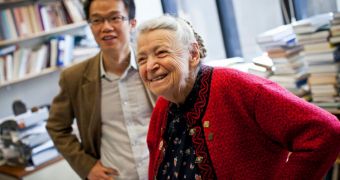Experts at the Massachusetts Institute of Technology (MIT), in Cambridge, announce the development of a new material that could be used to create new generations of semiconductor chips and thermoelectric devices.
Institute Professor Mildred Dresselhaus and materials science and engineering PhD student Shuang Tang created a thin film of bismuth-antimony. The material shares many of the properties that made the 2D carbon compound graphene so popular among researchers.
The latter is the toughest material ever obtained, and is widely believed to be one of the most significant discoveries in the field of materials science to be made over the last century. It was first obtained by experts at the University of Manchester, in the UK, in 2004.
Graphene has extremely interesting physical and chemical properties, which is why experts want to use it to replace silicon in all electronic applications. The bismuth-antimony thin film the MIT group created has many of the same properties, but also a few complementary ones.
What this implies is that the two advanced materials may be used in conjunction with each other, to enable applications that neither of them is equipped to handle on its own. Ambient temperature and pressure can be used to control several properties in the newly obtained thin film.
Just like inside graphene, electrons can travel like light waves do, inside the new material. This is very important for creating the next generation of computers, which will be able to display extreme computational speed.
Inside both graphene and bismuth-antimony thin films, electrons can travel up to several hundred times faster than in silicon-based electronics. According to the MIT group, the properties of the new thin films were derived from computer models of the material.
The next step in this research is to try to synthesize a sample of the material, on which to conduct real—life measurements. Only once this is done will researchers be able to accurately assess whether implementing the thin film in actual applications is possible.
“What is surprising is the richness of the system calculated by Tang and Dresselhaus. The beauty of this prediction is further enhanced by the fact that system is experimentally quite accessible,” comments Ohio State University physics professor Joseph Heremans, who was not part of the study.

 14 DAY TRIAL //
14 DAY TRIAL //